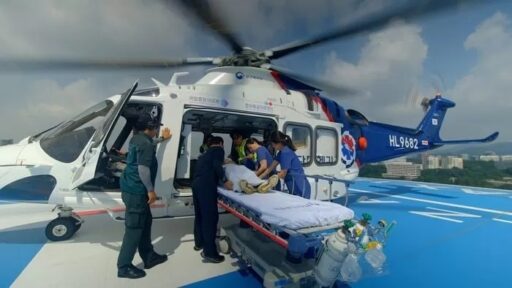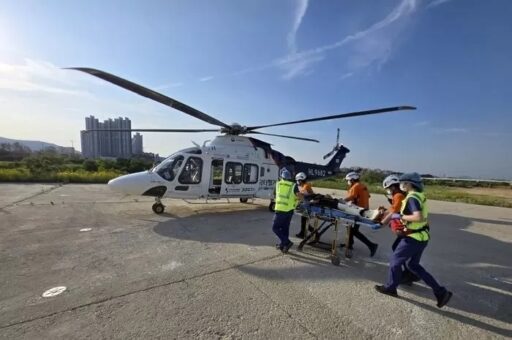Gyeonggi-do Doctor Helicopter, 'Sky Emergency Room' that has saved over 1,800 lives in 6 years
The Gyeonggi-do Doctor Helicopter has established itself as a key means of securing the golden hour by responding to a total of 1,843 missions over the past six years, rescuing 1,804 severely injured patients.
According to data released by Gyeonggi-do on the 9th, the Doctor Helicopter, which has been in operation in cooperation with Ajou University Hospital since 2019, recorded a cumulative total of 1,843 missions as of June 2025. Notably, in 2024, it achieved the highest number of missions among the eight Doctor Helicopters nationwide, with 573 missions.

The Gyeonggi-do Doctor Helicopter is unique in the country for its 24/7 operational system, allowing it to respond swiftly to emergencies occurring at night or in the early morning hours.
This 'Sky Emergency Room' is primarily deployed for transporting severely injured patients whose lives are directly tied to the golden hour, such as those with aortic ruptures, abdominal and chest injuries, and pelvic fractures.
Critical Moments of Life-Saving
A trauma surgeon boards the Doctor Helicopter, which is equipped with essential emergency medical equipment including an electrocardiogram monitor, automatic chest compression device, and a ventilator. Thanks to this specialized personnel and equipment, many lives have been saved.

In March, a 55-year-old woman with a ruptured spleen and mesenteric artery damage from a traffic accident was swiftly transported to Ajou University Hospital via the Doctor Helicopter, which arrived at the scene 28 minutes after the incident, allowing her to undergo emergency surgery and save her life.
Additionally, in June, a 31-year-old man suspected of having a thoracic aortic injury arrived at the hospital 54 minutes after the accident and is currently recovering after receiving treatment.
The dispatch of the Doctor Helicopter is determined by the 119 Comprehensive Situation Room and the Aviation Medical Team of Ajou University Hospital after comprehensive assessments of weather conditions, accessibility, and the patient's condition.

The medical personnel on board immediately provide emergency treatments such as oxygen supply, fluid injection, and hemorrhage control to maintain life upon arrival.
Efforts to Enhance Efficiency through Expansion of Transfer Points
To enhance the operational efficiency of the Doctor Helicopter, Gyeonggi-do is continuously expanding transfer points focused on industrial facilities and high-risk areas.
Transfer points are pre-selected locations where the Doctor Helicopter can hand over emergency patients to medical personnel.
Recently, new transfer points have been designated at Pyeongtaek LG Electronics Digital Park, Icheon Hynix Semiconductor Complex, and construction sites between Gimpo and Paju on the expressway.

Gyeonggi-do's Director of Health and Welfare, Yoo Young-cheol, stated, "The Gyeonggi-do Doctor Helicopter serves as an emergency transport system that protects lives 24/7, and its value shines even more during the summer when traffic accidents and trauma incidents are frequent. We will continue to make every effort to resolve blind spots in emergency medical care and secure the golden hour."
Gyeonggi-do Doctor Helicopter, Proposed by Lee Guk-jong and Responded to by Lee Jae-myung

Meanwhile, this Doctor Helicopter system began in 2018 when Professor Lee Guk-jong suggested, "An urgent need for a nighttime severe trauma transport system."
At that time, Lee Jae-myung, who was responsible for Gyeonggi-do's administration, immediately responded by signing a partnership agreement to introduce a 24-hour operational system and allocated budget for it.

The Gyeonggi-do Doctor Helicopter launched in 2019 as the nation's first continuously operating system capable of responding even at night.
Image source: Photo = Gyeonggi-do, News1


